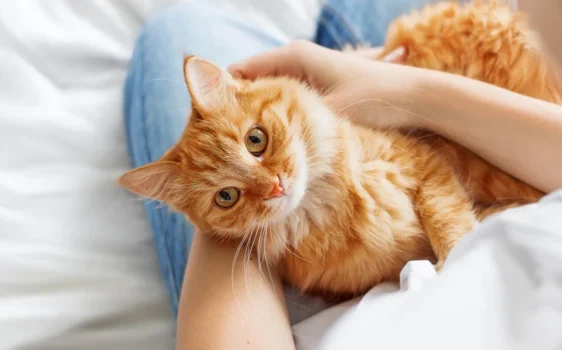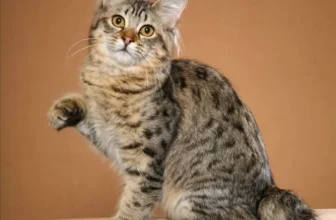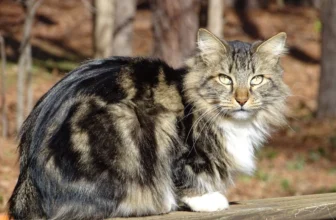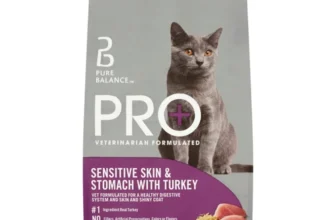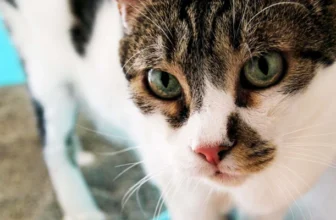As every loving American Bobtail owner knows, keeping your feline friend healthy is of utmost importance. While many aspects of their care are straightforward, one area that can prove challenging is dental hygiene. How do you go about cleaning your cat’s teeth without causing stress or injury? In this comprehensive guide, we will explore everything you need to know to successfully brush your American Bobtail’s teeth, from the benefits of regular dental care to troubleshooting common problems. So grab your toothbrush and let’s get started!
Why Brush Your American Bobtail’s Teeth?
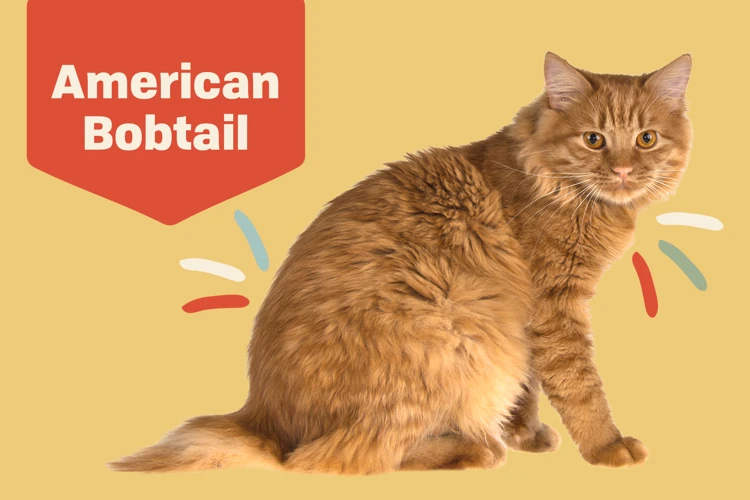
Maintaining the dental health of your American Bobtail is crucial because dental diseases can negatively impact their overall health. If you want your furry friend to have a healthy, happy life, then taking care of their teeth should be a top priority. In this section, we will explore the reasons why brushing your American Bobtail’s teeth is crucial for their wellbeing. We’ll discuss how it can prevent dental diseases, improve overall health, and prevent bad breath. For tips on preventative dental care, check out dental health for American Bobtail cats and preventing dental problems.
Prevent Dental Diseases
Maintaining good dental health for your American Bobtail cat is essential to ensuring they have a healthy life. Neglecting to brush your cat’s teeth could lead to a range of dental diseases which can cause discomfort and pain. Dental diseases could include gingivitis, periodontitis and cavities. By regularly brushing your cat’s teeth, you can prevent such dental diseases from taking hold.
1. Start Young – It’s a good idea to start brushing your American Bobtail’s teeth when they are young. This will help them get used to the habit of having their teeth brushed and make it easier for you to do so as they grow older.
2. Brush Often – Brushing your cat’s teeth often is another great way to prevent dental diseases. Experts recommend that you brush your cat’s teeth at least three times a week. This will ensure that harmful bacteria and plaque don’t build up on their teeth and gums.
3. Feed a Dental Diet – Feeding your cat a dental diet is also a great way to avoid dental diseases. Dental cat food is designed to help improve your cat’s oral health by reducing plaque and tartar buildup. It also contains ingredients that promote healthy gums and teeth.
4. Regular Vet Visits – Regular visits to the vet are also essential to maintain your cat’s dental health. The vet can check for any signs of dental disease and recommend treatments so that the disease doesn’t worsen. The vet can clean your cat’s teeth professionally to remove any buildup of tartar and bacteria.
5. Provide Dental Toys – Providing dental toys for your cat is another way to promote dental health. Chew toys can help massage your cat’s gums and scrape away plaque, reducing the risk of gum disease. Dental toys can also provide entertainment for your cat and reduce boredom.
By following these tips, you can help prevent dental diseases in your American Bobtail cat. Incorporating brushing with the right toothbrush and toothpaste, as well as feeding a proper diet and providing dental toys, can make a significant difference in promoting healthy teeth and gums. However, if you notice any bad breath or symptoms of dental disease, it is important to consult with a veterinarian to receive appropriate dental treatments for American Bobtail cats.
Improve Overall Health
Proper dental care can improve your American Bobtail’s overall health. Just like humans, cats can suffer from dental diseases such as periodontitis, gingivitis, and tooth decay. These dental diseases can lead to pain, difficulty eating, and even systemic infections if left untreated. But a consistent dental care routine can help prevent these issues and keep your cat healthy and happy.
According to veterinarians, periodontitis affects almost 70% of cats by the time they are three years old. In this disease, bacteria in the cat’s mouth forms plaque and tartar on the teeth, leading to gum inflammation, tooth decay, and tooth loss. In addition to causing pain and difficulty eating, untreated dental diseases can cause bacteria to travel through the bloodstream to other organs in the body, causing infection and damage. This can lead to serious health problems involving the heart, liver, and other organs.
However, following a regular teeth-cleaning routine can prevent these issues. Brushing your cat’s teeth regularly and feeding them dental-friendly food and treats can significantly reduce the chance of periodontal disease. Regular brushing helps to remove plaque buildup and reduce the probability of gum disease. Any periodontal issues can be discovered by regularly brushing their teeth and inspecting their mouth, allowing you to prevent the danger from more server dental issues.
To keep your cat’s teeth healthy, you could consider investing in dental toys and chew treats. These items can aid in preventing plaque build-up and promoting healthy gums. Also, it is recommended to take your cat for regular vet visits, as they will help educate you on how to best care for your cat’s dental health while also providing professional cleanings and care.
Keeping your cat’s teeth healthy should be a high priority. By following the tips and steps mentioned in this article, you can provide your American Bobtail with an excellent dental care routine that will help prevent dental diseases[1]. Remember, a healthy cat with healthy teeth is a happy cat that can live a long, fulfilling life.
Prevent Bad Breath
Maintaining fresh breath is just as important for your American Bobtail as it is for you. Bad breath, also known as halitosis, can be a sign of dental problems that require immediate attention. Regular brushing can effectively prevent bad breath in cats. By removing food particles and bacteria from the teeth and gums, you can get rid of the unpleasant odor. According to dental experts, bad breath can be an indicator of a more serious dental issue in cats. Here are some of the common causes of bad breath in American Bobtails:
| Cause | Symptoms | Treatment |
|---|---|---|
| Plaque and Tartar Build-up | Yellowish-brown deposits on the teeth, red and inflamed gums, bleeding gums | Regular brushing, dental cleanings at the vet |
| Gingivitis | Puffy, red, and bleeding gums, bad breath, loss of appetite | Brushing, professional dental cleaning, antibiotics, special diet |
| Periodontitis | Receding gums, loose teeth, persistent bad breath, oral pain | Professional dental cleaning, surgery, antibiotics |
| Oral Infections | Bloody or pus-like discharge from gums, painful ulcers, bad breath | Oral antibiotics, tooth removal |
Regular at-home dental care, including brushing and providing dental treats, as well as annual check-ups with the vet, can help prevent bad breath and dental issues in your cat. Feeding your American Bobtail a balanced and nutritious diet can also improve their overall dental health.
Getting Started with Brushing
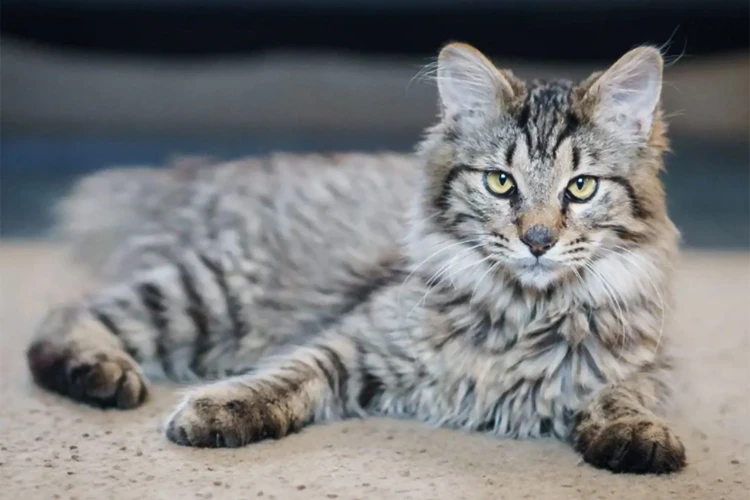
When it comes to brushing your American Bobtail’s teeth, getting started can be a daunting task. However, with the right approach and equipment, you can make the experience pleasant and even enjoyable for your feline friend. In this section, we’ll explore some tips on how to get started with brushing your cat’s teeth. From introducing your cat to the toothbrush gradually to selecting the right toothpaste, we’ve got you covered. So let’s get started!
Introduce Your Cat to Brushing Gradually
It’s important to introduce your American Bobtail to toothbrushing gradually. Rushing into the process can cause anxiety and fear, making it difficult for both you and your cat. Start by holding the toothbrush near their face, allowing them to sniff and investigate it. Be patient and give them time to get used to the toothbrush.
Next, move onto gently rubbing the toothbrush on their lips and teeth for a few seconds at a time. You can also try using your finger first to introduce the sensation of brushing. Do this for a few days before moving onto using a toothbrush.
As with any new experience, it’s important to keep the first few sessions short and sweet. This will help your cat get accustomed to the routine and before long, they should be comfortable with the process. A good tip is to gradually increase the time and frequency of brushing to avoid overwhelming your cat.
Remember to reassure your cat throughout the process by talking to them in a calm and soothing tone. Avoid using force or punishing your cat if they resist, as this will make toothbrushing a negative experience for them. With enough time and patience, your American Bobtail will soon become accustomed to the experience, making toothbrushing a hassle-free task for both of you.
For more tips on caring for your cat’s teeth, check out our article on American Bobtail Teeth Care Tips, or if you suspect that your cat is experiencing dental problems, it is important to take them to the vet for a check-up. Read more about Bobtail Dental Issues & Vet Visits to stay informed. Also, check out our helpful guide on Bad Breath in Cats and Treatment to prevent bad breath problems in your cat.
Choose the Right Toothbrush and Toothpaste
Selecting the right toothbrush and toothpaste for your American Bobtail is crucial for successful teeth brushing. Using a toothbrush designed for humans can be too harsh for your cat’s sensitive teeth and gums. Instead, opt for toothbrushes specifically designed for cats. These brushes are smaller in size and have softer bristles, making it easier to maneuver around your cat’s mouth.
When it comes to selecting a toothpaste, avoid using human toothpaste as it can be harmful to your cat if ingested. Look for a toothpaste specifically made for cats. These pastes come in flavors that cats love, such as chicken and fish, which can make the brushing process more enjoyable for your cat.
To help you select the right type of toothbrush and toothpaste for your American Bobtail, refer to the table below:
| Product | Description |
|---|---|
| Cat toothbrush | Small in size with soft bristles designed for cats |
| Cat toothpaste | Flavored toothpaste made specifically for cats |
Choosing the right toothbrush and toothpaste can make all the difference in your cat’s dental health. Experiment with different types until you find the ones that work best for your American Bobtail. Remember, it’s important to make teeth brushing an enjoyable experience for your cat, so be patient and encouraging throughout the process.
Get Your Cat Comfortable with Toothbrushing Gear
Before beginning the actual brushing process, it’s important to get your American Bobtail cat comfortable with the toothbrushing gear. This includes the toothbrush and toothpaste you will be using. Here are some tips to get your cat accustomed to the gear:
| Tip | Description |
|---|---|
| Start Slow | Introduce the toothbrush and toothpaste to your cat slowly. Allow them to sniff and investigate the gear before starting the brushing process. |
| Use Positive Reinforcement | Offer your cat small rewards, such as their favorite treat or toy, before and after brushing. This can help create a positive association with toothbrushing. |
| Choose the Right Toothbrush | Select a toothbrush that is specifically designed for cats. These brushes are smaller and softer than human toothbrushes, making them more comfortable for your pet. |
| Choose the Right Toothpaste | Opt for toothpaste specifically formulated for cats. Do not use human toothpaste, as it can be harmful to your cat. Flavors like tuna and chicken are often popular among cats. |
| Familiarize Your Cat with the Brushing Motion | Before brushing, allow your cat to see and smell the toothbrush. Then, use your finger to mimic the brushing motion along your cat’s teeth and gums. This helps your cat become familiar with the brushing sensation. |
By following these tips and getting your American Bobtail cat comfortable with the toothbrushing gear, you will make the actual brushing process much easier and more effective. Remember to take things slow and use positive reinforcement to create a positive environment for your pet.
Brushing Your American Bobtail’s Teeth
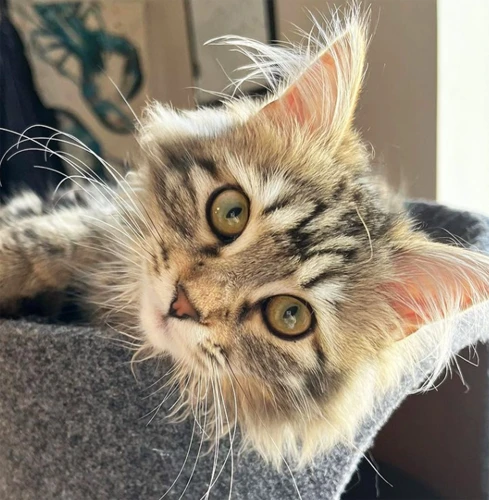
Taking care of your American Bobtail’s teeth is incredibly important for their overall health and wellbeing. Neglecting their oral hygiene can lead to a variety of dental diseases and health problems that can be costly and difficult to treat. That’s why it’s crucial to establish a regular teeth brushing routine for your feline friend. But how do you brush your American Bobtail’s teeth correctly? Follow these steps to ensure that your cat’s teeth are well taken care of.
Step 1: Start Slow and Steady
When it comes to brushing your American Bobtail’s teeth, it’s important to start slow and steady to avoid overwhelming your cat. Begin the process by introducing them to the toothbrush and toothpaste. Allow them to smell and inspect the tools before proceeding.
Be patient and gentle during the introduction phase. Allow your cat to become comfortable with the sensation of the bristles on their teeth and gums. This may take several sessions before your cat becomes accustomed to the process.
It’s important to establish a routine that your cat can become familiar with to help reduce any anxiety or resistance to having their teeth brushed. Start with a brief brushing session of 15-30 seconds and gradually increase the amount of time as your cat becomes more comfortable.
During the initial sessions, use a soft-bristled toothbrush designed specifically for cats. Avoid using human toothpaste, as it contains ingredients that can be harmful to cats. Instead, choose a toothpaste formulated specifically for cats with flavors such as chicken or fish.
Use positive reinforcement during these early stages to help your cat develop a positive association with toothbrushing. Reward them with a favorite treat or toy after each session, and praise them for their cooperation.
By starting slow and steady, you can help your American Bobtail become comfortable with toothbrushing and set the foundation for a lifetime of good dental hygiene.
Step 2: Brush in Circles
When brushing your American Bobtail’s teeth, it’s important to use gentle circular motions. This will help ensure that you remove any debris or plaque that may have built up on their teeth or gums. To brush your cat’s teeth effectively, follow the steps below:
| Step 1: | Hold the toothbrush at a 45-degree angle to your cat’s teeth, with the bristles facing towards the gums. |
| Step 2: | Start at the back of your cat’s mouth and work your way towards the front, using gentle circular motions to brush each tooth. |
| Step 3: | Be sure to brush both the inside and outside surfaces of your cat’s teeth, as well as their gums and tongue. |
| Step 4: | Pay special attention to the gumline, where bacteria and plaque tend to accumulate. |
Remember to be gentle and patient while brushing your cat’s teeth. It may take some time for them to get used to the sensation, but with practice, you’ll get the hang of it. If your cat is particularly resistant to having their teeth brushed, you may need to try using a different type of toothbrush or toothpaste to make the experience more appealing. Always remember to reward your cat for their cooperation, and get into a routine of brushing their teeth consistently to help prevent dental issues down the line.
Step 3: Focus on the Gumline
One of the most important steps in brushing your American Bobtail’s teeth is focusing on the gumline. Brushing this area can help prevent periodontal disease, which can lead to tooth loss and other health problems.
To properly brush the gumline, use a 45-degree angle and brush in circular motions along the base of the teeth where they meet the gums. This angle helps to remove the plaque and bacteria that can build up in this area.
It’s important to be gentle while brushing the gumline so as not to cause any irritation or damage. A soft-bristled toothbrush can help prevent any harm to the gums.
To ensure you brush each tooth and gumline thoroughly, consider using a tabletop brushing pattern where you work your way around the mouth in sections. You can use the below table as a guide for this process:
| Section | Teeth and Gumline to Brush |
|---|---|
| 1 | Upper incisors, canines, and premolars on the left side of the mouth |
| 2 | Lower incisors, canines, and premolars on the left side of the mouth |
| 3 | Upper molars on the left side of the mouth |
| 4 | Lower molars on the left side of the mouth |
| 5 | Upper incisors, canines, and premolars in the front center of the mouth |
| 6 | Lower incisors, canines, and premolars in the front center of the mouth |
| 7 | Upper molars on the right side of the mouth |
| 8 | Lower molars on the right side of the mouth |
| 9 | Upper incisors, canines, and premolars on the right side of the mouth |
| 10 | Lower incisors, canines, and premolars on the right side of the mouth |
By following this tabletop brushing pattern, you can ensure that you are thorough in brushing your American Bobtail’s teeth and gumline. Remember to be patient and gentle during the brushing process and to provide rewards at the end to reinforce good behavior.
Step 4: Finish with Rewards
After you finish brushing your American Bobtail’s teeth, it’s important to reward them for good behavior. This will associate toothbrushing with positive experiences and make it easier for you to brush their teeth next time. Here are some tips for rewarding your cat after a toothbrushing session:
- Treats: After you’re finished brushing, reward your cat with a special treat. Choose a treat that’s healthy and enjoyable for your cat.
- Play: Spend some time playing with your cat after brushing. Playtime is a great way to bond with your cat and show them that you love them.
- Cuddles: Give your cat some extra love and attention after brushing. Offer some cuddles and pets to show your cat that they did a great job.
- Praise: Use positive reinforcement by giving your cat lots of verbal praise. You can tell them what a good job they did or how proud you are of them.
Remember to always reward your cat immediately after brushing their teeth, so they understand the connection between toothbrushing and rewards. With consistent rewards, your cat will begin to look forward to toothbrushing as a positive experience.
Step 5: Be Consistent
Consistency is key when it comes to brushing your American Bobtail’s teeth. This means brushing their teeth on a regular basis, ideally daily, to ensure the best possible oral health for your feline friend. It’s important to establish a brushing routine early on and stick to it. Here are some tips for staying consistent:
- Set a schedule: Decide on a specific time of day for brushing your cat’s teeth and stick to that schedule. This will help your cat get used to the routine and will make it easier for you to remember to do it every day.
- Make it a positive experience: Use positive reinforcement, like treats or praise, during and after each brushing session. This will help your American Bobtail associate toothbrushing with good things.
- Be patient: It’s important to be patient with your cat as they get used to having their teeth brushed. Don’t get frustrated if they resist at first, and give them plenty of praise and rewards when they cooperate.
- Don’t skip a day: Consistency is key, and skipping a day of brushing can set you back in your progress. Even if you’re short on time or your cat seems resistant, try to at least attempt to brush their teeth each day.
- Monitor your cat’s oral health: Regular brushing will help you keep an eye on your cat’s dental health. If you notice any signs of oral problems, like bleeding gums or bad breath, consult with your veterinarian as soon as possible.
By following these tips, you can establish a consistent brushing routine and help ensure that your American Bobtail enjoys the best possible oral health. Remember, prevention is the best treatment when it comes to dental diseases, and regular brushing is one of the best ways to prevent them.
Troubleshooting Common Problems
As much as we love our American Bobtails, they can be quite stubborn when it comes to getting their teeth brushed, and you may run into some issues along the way. But don’t worry, we’ve got you covered. In this section, we’ll address and provide solutions to some of the most common problems you may encounter while trying to brush your cat’s teeth. So, let’s take a look at a few ways to troubleshoot some pesky problems and get back on track to maintaining your American Bobtail’s dental health.
Your Cat Refuses to Open their Mouth
It can be frustrating when your American Bobtail refuses to open their mouth during toothbrushing. Don’t panic though, this is a common problem that can be solved with some patience and training. One approach is to gradually introduce your cat to having their mouth touched. Here are some tips that you can use to train your cat:
| Tip | Description |
|---|---|
| Show, don’t tell | One way to train your cat is to show them how it’s done by brushing your own teeth in front of them. This may encourage them to follow suit and open their own mouth. |
| Practice with a finger | Try getting your cat accustomed to having their mouth touched by starting with a clean finger. Lift your cat’s lip and run your finger gently along their gum line. Increase the amount of time you spend doing this gradually, until your cat is comfortable with the sensation. |
| Choose the right brush | Opt for a small toothbrush or finger brush that is specifically designed for cats. Brushes that are too big may cause discomfort for your pet, and may make the entire process more challenging. |
| Change the flavor | If your cat refuses to open their mouth because they dislike the taste of toothpaste, try using a different flavor. Just like people, cats have different taste preferences. Experiment with different paste flavors until you find one that your cat likes. |
| Be patient | Change takes time and practice, especially with pets. If your American Bobtail refuses to open their mouth, don’t force them. Instead, take a break and try training again in a few hours. Consistency and patience are key to successfully training your cat to open their mouth for toothbrushing. |
Remember to reward your cat for good behavior during toothbrushing, even if it’s just a treat or extra attention. Positive reinforcement can go a long way in helping your American Bobtail feel comfortable and open their mouth more easily during brushing.
Your Cat Hates the Taste of Toothpaste
It can be frustrating when your American Bobtail hates the taste of the toothpaste you’re using. However, this is a common issue that many cat owners face. Fortunately, there are a few things you can try to make the experience more pleasant for your feline friend.
1. Try a Different Flavor
If your cat is turning their nose up at the toothpaste you’re using, it could be the flavor they dislike. Many cats prefer poultry, beef, or fish flavors. Experiment with different toothpaste flavors to find one that your American Bobtail enjoys.
2. Use a Toothbrush without Toothpaste
Toothpaste isn’t necessary for effective toothbrushing. Instead, you can use a toothbrush without any toothpaste and still remove plaque and food particles. Be sure to rinse the toothbrush with warm water before and after brushing.
3. Use a Toothpaste Alternative
Some cats simply don’t enjoy the feeling of toothpaste in their mouth. In this case, you can try using a toothpaste alternative, such as a dental gel or spray. These products don’t require any rinsing and can be applied directly to your cat’s teeth and gums.
4. Gradually Introduce Toothpaste
If your American Bobtail is hesitant about toothpaste, start by applying a tiny amount to their lips or gums. This will help them get used to the taste and texture of the toothpaste. Gradually increase the amount of toothpaste until your cat is comfortable with a full brushing.
5. Reward Your Cat
Positive reinforcement can go a long way towards getting your cat to accept toothbrushing. Offer treats or praise after each brushing session, even if it’s just for a few seconds. Over time, your American Bobtail will associate toothbrushing with positive experiences.
If your American Bobtail still hates the taste of toothpaste after trying these techniques, don’t give up. Your cat’s dental health is important, so keep trying until you find a solution that works for both you and your feline friend.
Your Cat Hates the Toothbrush
If your American Bobtail cat seems to hate the toothbrush, don’t worry – there are a few things you can try to make the experience more pleasant for them. Here are some possible solutions:
| Possible Solution | Description |
|---|---|
| Try a different type of toothbrush. | Just like humans, some cats may prefer a certain type of toothbrush over another. Try experimenting with different sizes, shapes, and textures until you find one that your cat seems to tolerate better. |
| Make the toothbrush more appealing. | Try dipping the toothbrush in tuna juice or chicken broth to make it more attractive to your cat. Alternatively, you could try using a toothbrush that has a flavor your cat enjoys. |
| Try a finger brush instead. | If your cat really can’t stand the toothbrush, consider using a finger brush instead. Finger brushes fit over your finger like a glove and can be less intimidating for some cats. |
| Use positive reinforcement. | Finally, always remember to reward your cat for good behavior during toothbrushing. Offer treats or verbal praise when they are cooperating, and try to keep the experience as positive as possible. |
Remember, it may take some trial and error to find a toothbrushing routine that works best for your American Bobtail. Stay patient, stay consistent, and don’t be afraid to try new things until you find a solution that works.
Your Cat is in Pain While Brushing
If your American Bobtail is experiencing pain while brushing, it’s important to address the issue as soon as possible. Here are some potential causes and solutions:
| Possible Cause | Solution |
|---|---|
| Brushing too hard or using a hard-bristled toothbrush | Switch to a soft-bristled toothbrush and be gentle while brushing. You can also try a finger brush or a washcloth as a gentler alternative. |
| Dental problems such as tooth decay or gum disease | Take your cat to the vet for a dental exam to identify any underlying dental issues that need to be addressed. |
| An injury or sore in the mouth | Inspect your cat’s mouth for any visible injuries or sores. If you find any, take your cat to the vet for treatment. |
| Anxiety or fear of toothbrushing | Try to make toothbrushing a more positive experience for your American Bobtail by incorporating rewards and praise. Consider using calming supplements or seeking advice from a veterinarian or animal behaviorist. |
Keep in mind that preventing dental problems and addressing them promptly is crucial to your cat’s overall health and well-being. If your cat continues to experience pain while brushing, consider seeking the advice of a veterinarian to ensure that there are no underlying health issues that need to be addressed.
Conclusion
In conclusion, brushing your American Bobtail’s teeth is an important part of their overall health and wellness. By regularly maintaining their dental hygiene, you can prevent dental diseases, improve their overall health, and prevent bad breath. It is important to introduce your cat to brushing gradually and choose the right toothbrush and toothpaste for their needs. Getting your cat comfortable with toothbrushing gear is also crucial.
When it comes time to brush your cat’s teeth, remember to start slow and steady, brushing in circles and focusing on the gumline. Finish with rewards and be consistent in your efforts. However, if you encounter any problems such as a refusal to open their mouth or pain while brushing, there are troubleshooting solutions available.
Overall, taking care of your American Bobtail’s dental health is a crucial part of their overall wellbeing. With patience, practice, and the right tools, you can help them maintain a healthy and happy life. So don’t hesitate to start brushing your cat’s teeth today!
Frequently Asked Questions
1. Can I use human toothpaste on my American Bobtail?
No, human toothpaste is not safe for cats. It contains ingredients that can be harmful to your American Bobtail. Use toothpaste that is specifically made for pets.
2. How often should I brush my American Bobtail’s teeth?
You should brush your American Bobtail’s teeth at least three times a week. However, daily brushing is recommended for the best results.
3. How can I get my American Bobtail used to brushing?
Introduce brushing gradually and use positive reinforcement. Start by letting your cat lick the toothpaste off your finger, then gradually introduce a toothbrush.
4. How long should I brush my American Bobtail’s teeth for?
You should aim to brush your cat’s teeth for at least 30 seconds to a minute per session. Focus on each tooth and the gumline.
5. What if my American Bobtail hates the toothbrush?
You can try using a finger brush or a soft-bristled toothbrush. Alternatively, there are dental wipes available that can help clean your cat’s teeth.
6. Is there anything I can do to make the toothpaste taste better?
You can try using a flavored toothpaste that your cat likes. You can also try warming up the toothpaste to room temperature to make it more appealing.
7. Can brushing my cat’s teeth really prevent bad breath?
Yes, regular brushing can help prevent bad breath in cats. This is because it helps remove plaque and bacteria buildup in the mouth that can cause bad breath.
8. My American Bobtail won’t let me brush their teeth. What can I do?
You can try using dental treats and toys that can help clean your cat’s teeth. However, brushing is still the most effective way to remove plaque and bacteria from your cat’s teeth.
9. Is it normal for my American Bobtail’s gums to bleed while brushing?
Some bleeding may occur when you first start brushing your cat’s teeth, but it should stop after a few sessions. If bleeding persists, consult with your veterinarian as it could be a sign of gum disease.
10. How do I know if my American Bobtail has dental problems?
Look for signs such as bad breath, difficulty eating, pawing at the mouth, and discolored teeth. Regular dental check-ups with your veterinarian can also help detect any dental problems early on.

